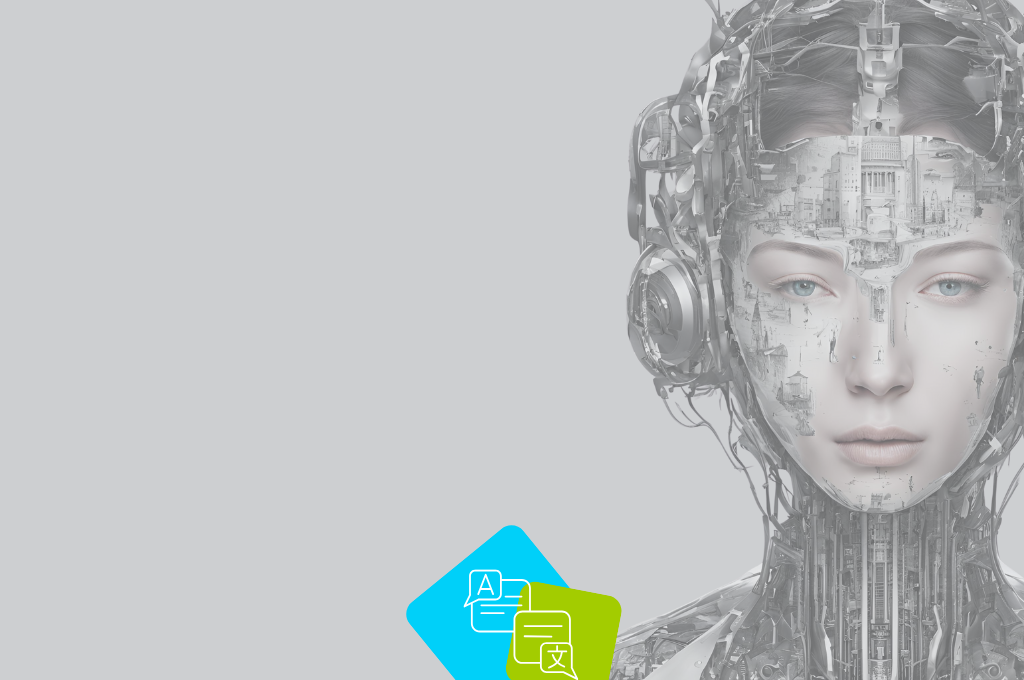In the era of dynamic development of artificial intelligence, more and more processes that used to be carried out by humans are now being carried out by machines. One area where this can be seen is translation, and this includes specialist translations which encompass fields such as medicine, technology or law. As AI tools become ever more advanced, the question arises: whose eye is better-equipped to handle these types of tasks, a human’s or that of a machine? No clear-cut answer can be given to this question. Both the human and the artificial intelligence have their strengths and weaknesses, and the numerous pitfalls that may emerge in the process of specialist translation require an in-depth analysis, cooperation between both entities and the translator’s supervision.
The role of the AI in specialist translations
Artificial intelligence-based translation tools, such as Google Translate, DeepL or other machine-assisted programs, serve to speed up the translation process significantly. They are capable of processing huge amounts of text in a fraction of a second, offering translations in hundreds of languages. This technology becomes an invaluable help, especially in the context of tasks which require quick processing of a large amount of content.
However, in the case of specialist translations, the AI encounters numerous limitations. The main pitfall stems from the lack of a full grasp of the context or the intricacies of the industry-specific language. Technical or medical translation is not merely the translation of words, but above all the understanding of the content in a scientific context. The machine, despite its advanced technology, lacks the ability to fully convey the sense of specialist terminology which is often ambiguous or used in specific circumstances.
Examples of the pitfalls in specialist translations
First of all, as shown by the practice of the translators at JWP, the machine is ill-prepared to wrestle with longer fragments of text. It will jam and output translation fragments that make no sense whatsoever. In such situations, it tends to be very creative, coming up with words that don’t even exist in our native language, yet are really credible in appearance. What the software also finds particularly difficult is dealing with lists of elements which are devoid of syntax. It is not only longer fragments of text that are affected, but also words, for example, the IUPAC names of chemical compounds which are usually very lengthy. Interestingly, these types of words are quite easy for the translator to translate or even transcribe between languages, but pose problems for the machine which produces comical results with syllables or multiple repetitions of parts of the name. Of course, such incorrectly translated names can completely alter the scope of protection of an invention, so it always has to be borne in mind that the text also undergoes verification by virtue of the human eye.
There are terms whose equivalents are truly hard to arrive at. The translator, having read several publications, will track them down eventually, while the artificial intelligence will resort to creativity and make the term up. As an example, the French term “mouton-pendule” can be mentioned here which refers to a machine for conducting crash tests and which, with the creative work of the machine, ended up being rendered as “swinging sheep” in the Polish translation.
There are also the rare instances where the AI tool fails altogether to sense the context. An example can be the sentence about peeling, stoning and chopping mango in which the AI went a bit too far when it comes to the understanding of the word “stoning” and had the mango stoned in the Polish translation, instead of simply having stated that its stone had been removed. A similar example is the translation of the German term “Brand” which AI translated as fire, which is of course an appropriate translation of the word, but the term, when in the context of ceramic processing, has the meaning of firing. It is obvious that the firing of the ceramic elements is not conducted in any fire ignited especially on this occasion by the production facility.
Steering clear of the pitfalls – a human-AI synergy
How does synergy differ from cooperation? Synergy is achieved when two or more people or machines cooperate together to create a better solution than either of them could create alone. While the AI may be indispensable in translating simple, non-specialist texts or in the case of translations requiring speed, specialist translations continue to require the input of human knowledge and intuition.
The ideal solution is to combine the potential of the AI with the experience and knowledge of the translator. The AI-based translation tools can be used to support the translation process by offering preliminary suggestions which are then reviewed and corrected by the human. Thanks to this, it is possible to attain high efficiency and accuracy at the same time. The human translator can focus on substantive correctness and the intricacies, with the AI speeding up the process by automatically translating large amounts of text.
The future of specialist translation
It goes without saying that the AI will play an increasing role in translations, however, we should not be looking forward to a complete replacement of the human in this field, especially as far as specialist translations are concerned. The human experience and knowledge will remain invaluable, especially in the fields where precision is of the essence, such as medicine, technology or law.
The key to success will be to properly use the possibilities offered by the artificial intelligence, while relying on the human for the tasks which require intuition, creativity and a full understanding of the context. It is in this synergy where the future lies for specialist translations which, through the combination of the power of the human and the machine, will become even more precise, fast and accessible worldwide.



